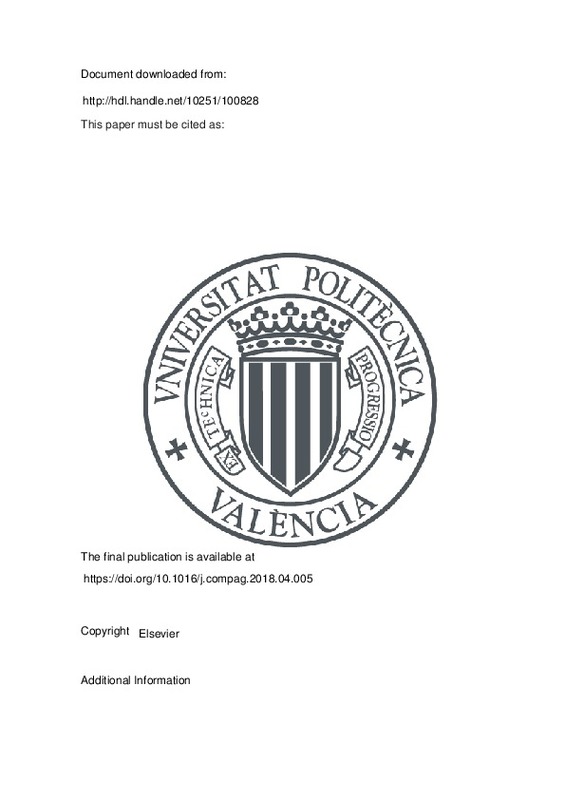JavaScript is disabled for your browser. Some features of this site may not work without it.
Buscar en RiuNet
Listar
Mi cuenta
Estadísticas
Ayuda RiuNet
Admin. UPV
Enhanced fish bending model for automatic tuna sizing using computer vision
Mostrar el registro sencillo del ítem
Ficheros en el ítem
| dc.contributor.author | Muñoz-Benavent, Pau
|
es_ES |
| dc.contributor.author | Andreu García, Gabriela
|
es_ES |
| dc.contributor.author | Valiente González, José Miguel
|
es_ES |
| dc.contributor.author | Atienza-Vanacloig, Vicente
|
es_ES |
| dc.contributor.author | Puig Pons, Vicente
|
es_ES |
| dc.contributor.author | Espinosa Roselló, Víctor
|
es_ES |
| dc.date.accessioned | 2018-04-22T04:13:45Z | |
| dc.date.available | 2018-04-22T04:13:45Z | |
| dc.date.issued | 2018 | es_ES |
| dc.identifier.issn | 0168-1699 | es_ES |
| dc.identifier.uri | http://hdl.handle.net/10251/100828 | |
| dc.description.abstract | [EN] This paper presents a non-invasive fully automatic procedure to obtain highly accurate fish length estimation in adult Bluefin Tuna, based on a stereoscopic vision system and a deformable model of the fish ventral silhouette. The present work takes a geometric tuna model, which was previously developed by the same authors to discriminate fish in 2D images, and proposes new models to enhance the capabilities of the automatic procedure, from fish discrimination to accurate 3D length estimation. Fish length information is an important indicator of the health of wild fish stocks and for predicting biomass using length-weight relations. The proposal pays special attention to parts of the fish silhouette that have special relevance for accurate length estimation. The models have been designed to best fit the rear part of the fish, in particular the caudal peduncle, and a width parameter has been added to better fit the silhouette. Moreover, algorithms have been developed to extract snout tip and caudal peduncle features, allowing better initialization of model parameters. Snout Fork Length (SFL) measurements using the different models are extracted from images recorded with a stereoscopic vision system in a sea cage containing 312 adult Atlantic Bluefin Tuna. The automatic measurements are compared with two ground truths: one configured with semiautomatic measurements of favourable selected samples and one with real SFL measurements of the tuna stock collected at harvesting. Comparison with the semiautomatic measurements demonstrates that the combination of improved geometric models and feature extraction algorithms delivers good results in terms of fish length estimation error (up to 90% of the samples bounded in a 3% error margin) and number of automatic measurements (up to 950 samples out of 1000). When compared with real SFL measurements of the tuna stock, the system provides a high number of automatic detections (up to 6706 in a video of 135¿min duration, i.e., 50 automatic measurements per minute of recording) and highly accurate length measurements, obtaining no statistically significant difference between automatic and real SFL frequency distributions. This procedure could be extended to other species to assess the size distribution of stocks, as discussed in the paper. | es_ES |
| dc.description.sponsorship | This work was supported by funding from ACUSTUNA project ref. CTM2015-70446-R (MINECO/ERDF, EU). This project has been possible thanks to the collaboration of IEO (Spanish Oceanographic Institute). We acknowledge the assistance provided by the Spanish company Grup Balfego S.L. in supplying boats and divers to acquire underwater video in the Mediterranean Sea. | en_EN |
| dc.language | Inglés | es_ES |
| dc.publisher | Elsevier | es_ES |
| dc.relation.ispartof | Computers and Electronics in Agriculture | es_ES |
| dc.rights | Reserva de todos los derechos | es_ES |
| dc.subject | Underwater stereo-vision | es_ES |
| dc.subject | Computer vision | es_ES |
| dc.subject | Fisheries management | es_ES |
| dc.subject | Automatic fish sizing | es_ES |
| dc.subject | Biomass estimation | es_ES |
| dc.subject.classification | INGENIERIA DE SISTEMAS Y AUTOMATICA | es_ES |
| dc.subject.classification | FISICA APLICADA | es_ES |
| dc.subject.classification | ARQUITECTURA Y TECNOLOGIA DE COMPUTADORES | es_ES |
| dc.title | Enhanced fish bending model for automatic tuna sizing using computer vision | es_ES |
| dc.type | Artículo | es_ES |
| dc.identifier.doi | 10.1016/j.compag.2018.04.005 | es_ES |
| dc.relation.projectID | info:eu-repo/grantAgreement/MINECO//CTM2015-70446-R/ES/ACUSTICA Y BIOMETRIA DEL ATUN ROJO (THUNNUS THYNNUS)/ | es_ES |
| dc.rights.accessRights | Abierto | es_ES |
| dc.contributor.affiliation | Universitat Politècnica de València. Departamento de Física Aplicada - Departament de Física Aplicada | es_ES |
| dc.contributor.affiliation | Universitat Politècnica de València. Instituto de Investigación para la Gestión Integral de Zonas Costeras - Institut d'Investigació per a la Gestió Integral de Zones Costaneres | es_ES |
| dc.contributor.affiliation | Universitat Politècnica de València. Departamento de Informática de Sistemas y Computadores - Departament d'Informàtica de Sistemes i Computadors | es_ES |
| dc.description.bibliographicCitation | Muñoz-Benavent, P.; Andreu García, G.; Valiente González, JM.; Atienza-Vanacloig, V.; Puig Pons, V.; Espinosa Roselló, V. (2018). Enhanced fish bending model for automatic tuna sizing using computer vision. Computers and Electronics in Agriculture. 150:52-61. https://doi.org/10.1016/j.compag.2018.04.005 | es_ES |
| dc.description.accrualMethod | S | es_ES |
| dc.relation.publisherversion | https://doi.org/10.1016/j.compag.2018.04.005 | es_ES |
| dc.description.upvformatpinicio | 52 | es_ES |
| dc.description.upvformatpfin | 61 | es_ES |
| dc.type.version | info:eu-repo/semantics/publishedVersion | es_ES |
| dc.description.volume | 150 | es_ES |
| dc.relation.pasarela | S\357920 | es_ES |
| dc.contributor.funder | Ministerio de Economía, Industria y Competitividad | es_ES |







![[Cerrado]](/themes/UPV/images/candado.png)

